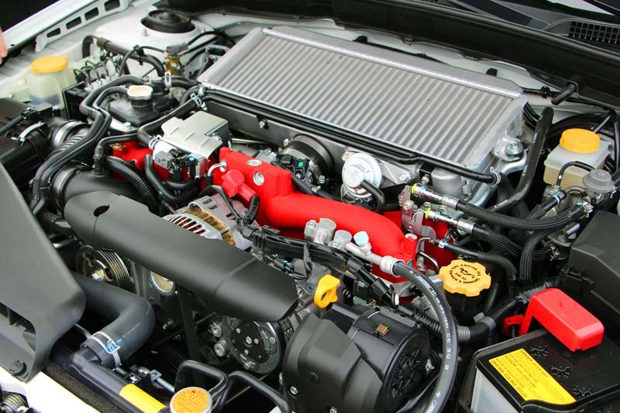Nobody likes unpleasant surprises, especially when they cost you a lot of money. That’s precisely why vehicle shoppers, new or used, should be aware that a variety of things may compromise a vehicle’s warranty, whether it’s brand-new, or a newer used model with remaining coverage.
The warranty on the few-year-old car you’re considering for purchase could be voided or compromised, without you (or the seller) even knowing it. If that’s the case, you could be in for a nasty and expensive surprise, should you need a warranty-related repair down the line.
It’s also possible to put your vehicle’s warranty at risk if you’re unfamiliar with the ongoing servicing required to maintain that warranty in good standing.
The scariest part? Today, vehicles are more maintenance-free than ever – but many owners still fail to take correct steps to properly care for them. Proper maintenance and care are extremely important to maintain your vehicle’s warranty in good standing, whether you’re the first owner of a given vehicle or not.
There are numerous ways a current or former owner of a vehicle may compromise or void their warranty, or some part of it. So, whether you’re buying a new vehicle, or a used vehicle with remaining warranty coverage, we’ve compiled some tips and notes to avoid popular warranty killers, and to help ensure your warranty is in full effect, for its full duration.
We’ll also cover a few tips to help keep you from buying a used ride from a seller who has, somehow, nuked that machine’s warranty coverage, whether they know it or not.
Skipping and Stretching Scheduled Maintenance

A full and detailed listing of maintenance requirements for the vehicle you drive is simple to find, and always at arms-reach. This listing is located in the owner’s manual, which is likely in your glovebox. If it’s not, check online for the scoop.
You need to know this stuff. A spokesperson from FCA says “to ensure proper vehicle functioning and active warranty coverage, every Owner’s Manual contains a section on vehicle maintenance, including minimum service schedules required. Proper vehicle maintenance is necessary as a preventative measure to vehicle repairs.”
In fact, the owner’s manual for FCA vehicles (and others) contains a snippet that reads, in part: “Your warranty requires you to perform scheduled maintenance at the time or meterage shown in the owner’s manual. If your vehicle fails as a result of your failure to maintain it properly, repairs may not be covered.”
A BMW spokesperson adds, “Servicing a BMW Group vehicle per the recommended schedule in the owner’s manual is essential to maintaining the BMW New Vehicle Limited Warranty. Should a component fail and the cause of the failure was related to lack of required maintenance, warranty coverage would be denied accordingly.”
Though the rules vary from automaker to automaker, new-car owners are best to ensure that all maintenance outlined in the owner’s manual is carried out at, or preferably before, the intervals specified. This includes oil changes.
The gist? Your vehicle has a unique service schedule that needs to be adhered to strictly, to ensure the warranty remains in full effect. The servicing typically needs to occur within a given time-frame, or at/before a certain mileage accumulates on the odometer, and stretching or skipping maintenance items may cost you dearly.
For instance, if you, or a past owner, fails to replace the cabin air filter regularly, that filter will become clogged, which can damage the vehicle’s air conditioner. In this scenario, repairs would not be covered by warranty. Changing a cabin air filter is often a three-minute, once-a-year job that costs about $25. Skip it a few times, and you could wind up with a $1,200 AC repair bill.
A Honda spokesperson provides another example. “If a customer skipped their service for brake lube and inspection, and have a problem with their radio, the skipped service for brakes wouldn’t be applicable. However, if they skipped the service for brakes, and later had brake noise due to failed parts within the warranty parameters, they could be turned down for lack of maintenance.”
Also, note that some vehicles have a timing belt that needs to be replaced at a pre-set interval. If this pricey and inconvenient replacement is skipped, and the timing belt fails while the vehicle is still under warranty, catastrophic engine damage is possible, and you’ll be footing the bill. If a seller of a used vehicle tells you that they’ve recently changed the timing belt, be sure you see records that prove it.
Checking the Records

If you’re buying a used car, checking service records against the vehicle’s maintenance schedule is a great idea. Determine the mileage on the used vehicle against the servicing requirements in the owner’s manual, and seek records or receipts that prove each and every past-due service has been completed on time.
Some owners keep a paper copy of each and every service record, making this review easy. If that’s not the case, a local dealer service department may be able to help, but you may need to bring the vehicle’s seller with you, or ask them to contact the dealer to obtain all records, providing the vehicle was exclusively serviced at that dealer.
Honda’s spokesperson explains, “Bringing a car in that does not belong to the customer may result in privacy issues at a dealership, and you could be declined service. In this scenario, we would recommend bringing the existing owner to the dealership. Note that dealers may only see activity (maintenance, warranty work, etc.) completed at their facility. If vehicle was serviced at a different or multiple dealers, understanding the full warranty/maintenance history may be difficult.”
BMW’s spokesperson adds, “Vehicle warranty information would not be provided to potential private purchasers of a pre-owned vehicle. The registered owner of a respective vehicle would need to either appear in person, or provide proof-of-ownership acceptable to the retailer to request warranty status information regarding their vehicle.”
All said, when buying a used vehicle with remaining factory warranty, you’re best to buy a vehicle that’s familiar to, and has been serviced exclusively by, a single local dealer – and to obtain the service records, possibly with the help of the vehicle’s seller, to ensure everything is in order.
Modifications

Some used vehicles are popular candidates for modification by owners. Modifications can take many forms – including the addition of non-factory lighting or stereo system provisions, alarm systems, aftermarket performance parts, engine tuning software, non-factory specified fluids, the addition of plows and other hardware, and the use of suspension lowering kits or coil-over kits.
In a wide range of situations, modifications can void a vehicle’s warranty, or some part of it. In fact, the FCA owner’s manual (and others) have a section dedicated to non-factory modifications, and how those modifications themselves, or any problems they cause, aren’t covered by warranty.
FCA’s spokesperson comments, “Ultimately, if the lack of maintenance, or modifications, are responsible for the failure, repairs would be the responsibility of the customer.”
Honda’s spokesperson adds, “This depends if the failure is linked back to the aftermarket component. If yes, warranty is void for the problem at hand, but not necessarily the entire vehicle. It’s recommended to have and/or understand if aftermarket components were installed at a dealership. If so, then warranty exists. It’s recommended to have branded accessories installed by the dealership.”
Simply, there’s no hard and fast rule that covers all modifications on all makes and models from a warranty standpoint, though a general rule is “proceed with extreme caution” if you’re buying a used vehicle that’s not factory stock. For the average shopper, modified vehicles are best avoided.
Chips and Tunes and Power Programmers

To ensure your warranty remains intact, avoid models that are currently running, or have ever run, non-factory engine management software, which is often used on sportier turbocharged models to “turn up the boost” and generate more power.
BMW’s spokesperson says, “The use of non-factory programming to modify engine operating parameters would categorically void the BMW New Vehicle Limited Warranty in respect to of failures related to the use of such modifications.”
Many automakers have clever ways to detect the presence of non-factory engine management software, even if the seller sets things “back to stock” before selling the vehicle or attempting to obtain a warranty repair.
For instance, if you buy a used Subaru WRX or Hyundai Genesis from someone that’s formerly cranked up the turbo for more power, you can assume that vehicle no longer has a powertrain warranty – and that any engine problems suffered during your ownership will be your responsibility. Several dealer service advisors in our network say customers regularly experience engine damage caused by non-factory tuning software, and expect the warranty to cover it.
Service advisor Lori Boerio says, “It’s a familiar story – the engine software is modified, damage eventually results, and the sets the computer back to stock, expecting us to replace their blown engine under warranty. Thing is, even if the ECU is set back to stock, we can still tell if it’s ever run modified programming. Some owners even run a second ECU for their performance program, and pop the factory ECU back in when things go bad – but we can detect that, too. In any case, this voids their warranty instantly – no questions asked.”
Our Honda spokesperson adds, “As above, if there is evidence of aftermarket tampering, vehicle warranty could be voided.”
Of course, this varies from automaker to automaker. Still, think twice before buying a modified vehicle, and ask your local dealer if they can check the vehicle over, and check for any warranty-related “black flags” that may have been caused by previous owners, before you buy.

